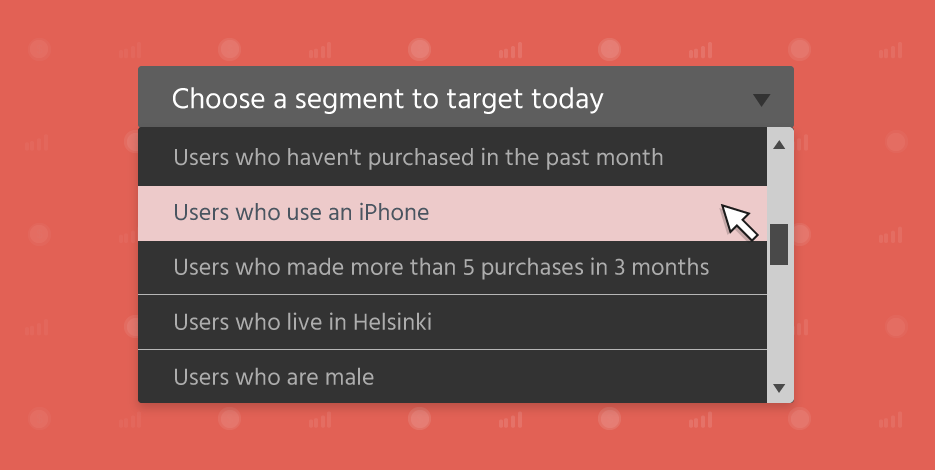
How To Develop A Marketing Strategy From The Ground Up [2025]
Developing a marketing strategy is an essential part of every successful business plan. To create one, you need to familiarize yourself with some of the most popular marketing channels out there, including online and offline.
Does this sound like a lot? Today we will cover the most important strategies to turn your customers into loyal advocates of your brand.
More specifically, we’ll see:
- What a marketing strategy is
- Why you need one
- Online and offline strategies to use
Without further ado, let’s start!
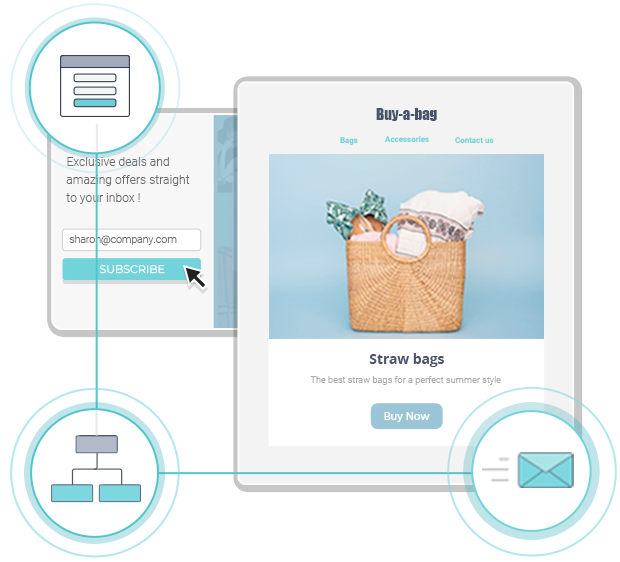
The easiest and most affordable email marketing and newsletter software!
What Is A Marketing Strategy?
In short, it is a set of tactics that aims at helping you understand your target audience, their needs, and pain points to promote your product/services in the best possible way. As a broader term, a marketing strategy encompasses all the techniques you will use to position yourself in front of your potential customer’s eyes.
Before we move on, let’s clarify a few terms that are easily confused with one another.
Marketing Plan: a strategy used to determine your target market, how to reach it, how to price your product/service, and how to optimize your marketing efforts.
Marketing Campaign: an activity that aims to promote a new product or service, your brand, or any other business goal you need to achieve.
How To Create A Successful Marketing Strategy
Building an effective strategy requires a few steps you need to take before you adopt the right tactics for your small business, startup, and so on.
Briefly, here are some things you have to do to prepare yourself before you delve into the actual marketing process:
- Craft your marketing plan: make sure to write yours by performing market research. Add the resources your marketing team will need to succeed and the actions you need to make your strategy work.
- Create buyer personas: identify your ideal customer to ensure that you use the right methodology to approach and convert them. To find yours, collect demographic data (age, gender, etc.) and use them to craft your buyer personas.
- Set your KPIs: make sure that you set clear and achievable goals to successfully find the means to fulfill them.
- Make your marketing campaigns: choose the right campaign to target your audience. Depending on the channel you use, come up with value propositions that will intrigue and make them take action.
After you create your marketing mix and run your campaigns, you need to focus on optimizing them. As strategic marketing is all about having a competitive advantage, refining your processes is essential to step up your game and keep up with current market trends.
Marketing Plan Template
If you need a marketing plan template to get started, you can use Moosend’s template. Inside, you’ll find everything you need to:
- Perform your SWOT analysis
- Run a competitive analysis
- Create your marketing calendar
- Define your buyer personas
- Set your marketing budget
- Compose your marketing mix
You can get the template here. Just make a copy and you are ready to go.
Best Online Marketing Strategies
Now let’s move on to the actual tactics you can use for your business, starting with the best digital marketing strategies.
Below, you’ll find the most effective tactics and channels you can use to increase your brand awareness and conversions. Let’s see them.
1. Email Marketing Strategy
Email is one of the most popular and cost-effective marketing tools you can use to reach your target audience.
Apart from its great return on investment which accounts for $42 for every $1 invested, email marketing is the best way to deliver personalized and relevant initiatives to your subscribers. As a result, you can easily nurture new customers and turn them into loyal advocates of your brand.
To do email marketing, you need to get your hands on an email service provider (ESP). Tools like Moosend, Mailchimp, and Constant Contact will give you the means to ace your marketing efforts.
Nevertheless, if you want to scale your business, choose platforms that offer you everything you need without breaking the bank. Moosend, for example, starts at $9/month and offers you an email, landing page, and online form builder to help you:
- Expand your email list through newsletter signup forms
- Segment your contacts based on similar criteria (e.g. age, gender)
- Create your email marketing campaign or select a template
- Use email marketing automation to streamline your marketing goals with workflows
- Measure your metrics and optimize your strategy
Email is one of the best ways to reach your customer base through a channel they know well. Nevertheless, make sure to follow email etiquette guidelines to avoid annoying them or ending up in the spam folder.
Interested in Moosend as well? You can sign up for an account and take the email editor for a quick spin!
Example – Sephora’s Welcome Email
One of the advantages of email marketing is that you can create a variety of messages for your audience. For instance, you can make welcome series, cart abandonment, re-engagement, and promotional campaigns.
Below, you can see how Sephora uses Moosend’s email tools to craft a simple yet effective welcome campaign for new subscribers:
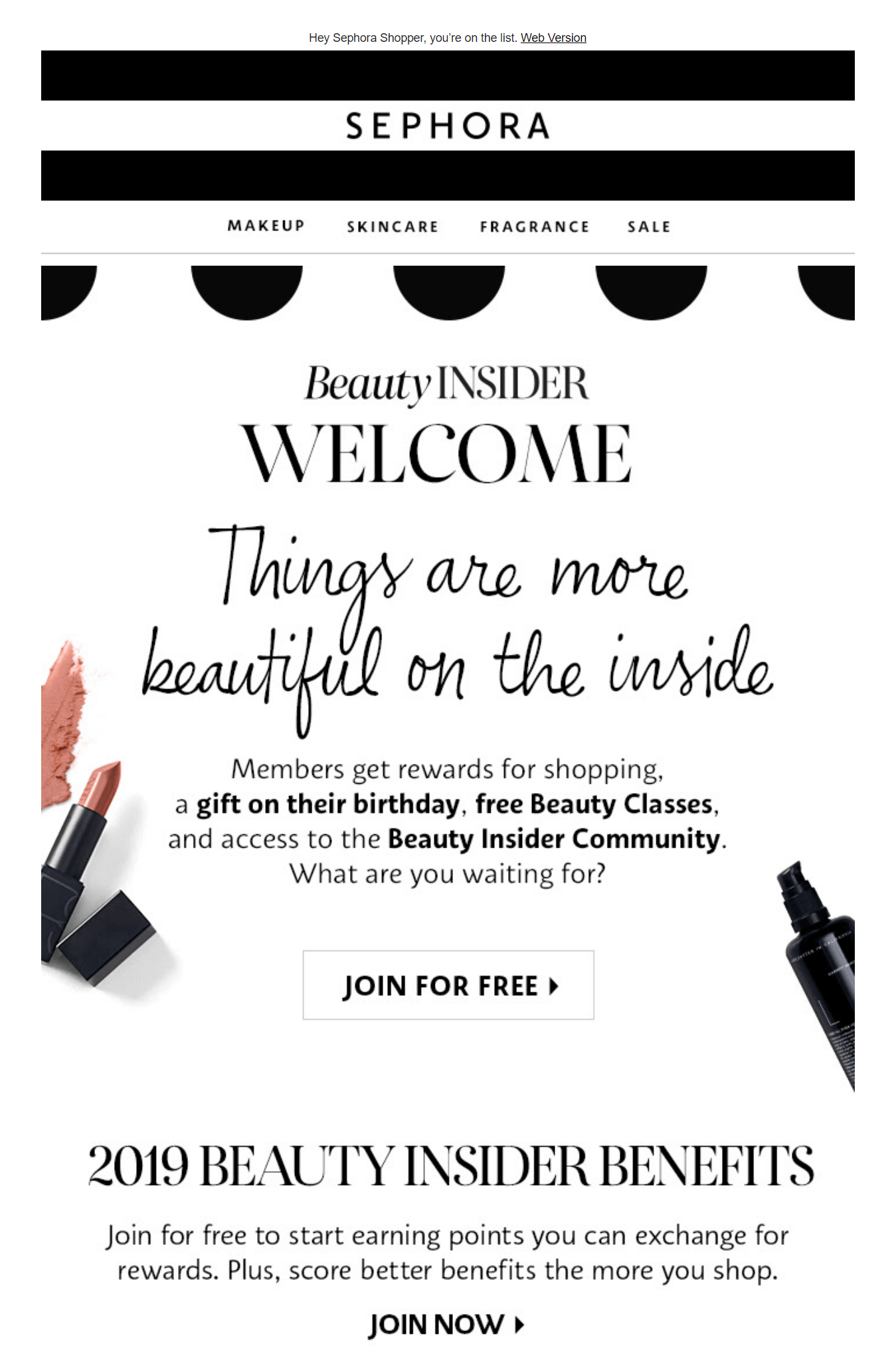
The beauty brand’s goal is to welcome its potential customers and show them the value of joining its mailing list. Moreover, Sephora uses this campaign to promote its loyalty program, an initiative that can help brands build stronger relationships with their target audience.
If you want to learn more about this type of email, make sure to check our collection of welcome email examples.
2. Search Engine Optimization
SEO is one of the most important online marketing strategies that you need to implement before you start writing your content.
This tactic entails finding the right keywords to target before you set your content marketing strategy in motion.
These terms can vary depending on your industry. For instance, if you have a SaaS business, you need to target keywords like “best X tools.” For eCommerce stores, though, you can focus on more generic keywords like “best moisturizer for dry skin.”
As a rule of thumb, find keywords that are relevant and easy to target, especially at the beginning.
To help you nail your first SEO campaign, make sure to memorize the following. These are essential to identifying the right keywords for your business and help you make the right call:
- Search volume: how many people are searching for the keyword you searched
- Keyword difficulty: how easily your content piece will appear in search engine results. The higher the difficulty, the more it will take to rank.
Now to check these indicators you’ll need a tool like Ahrefs to perform your keyword research. When you find the perfect terms to target, it’s time to select the right type of content based on your audience’s search intent. This can be a blog post, video, or even a podcast.
Example – Ahrefs Keyword Research
Ahrefs is a handy SEO tool that will help you identify the monthly volume and difficulty of your keywords.
Below, you can see the relevant results for the “best moisturizer for dry sin” keyword:
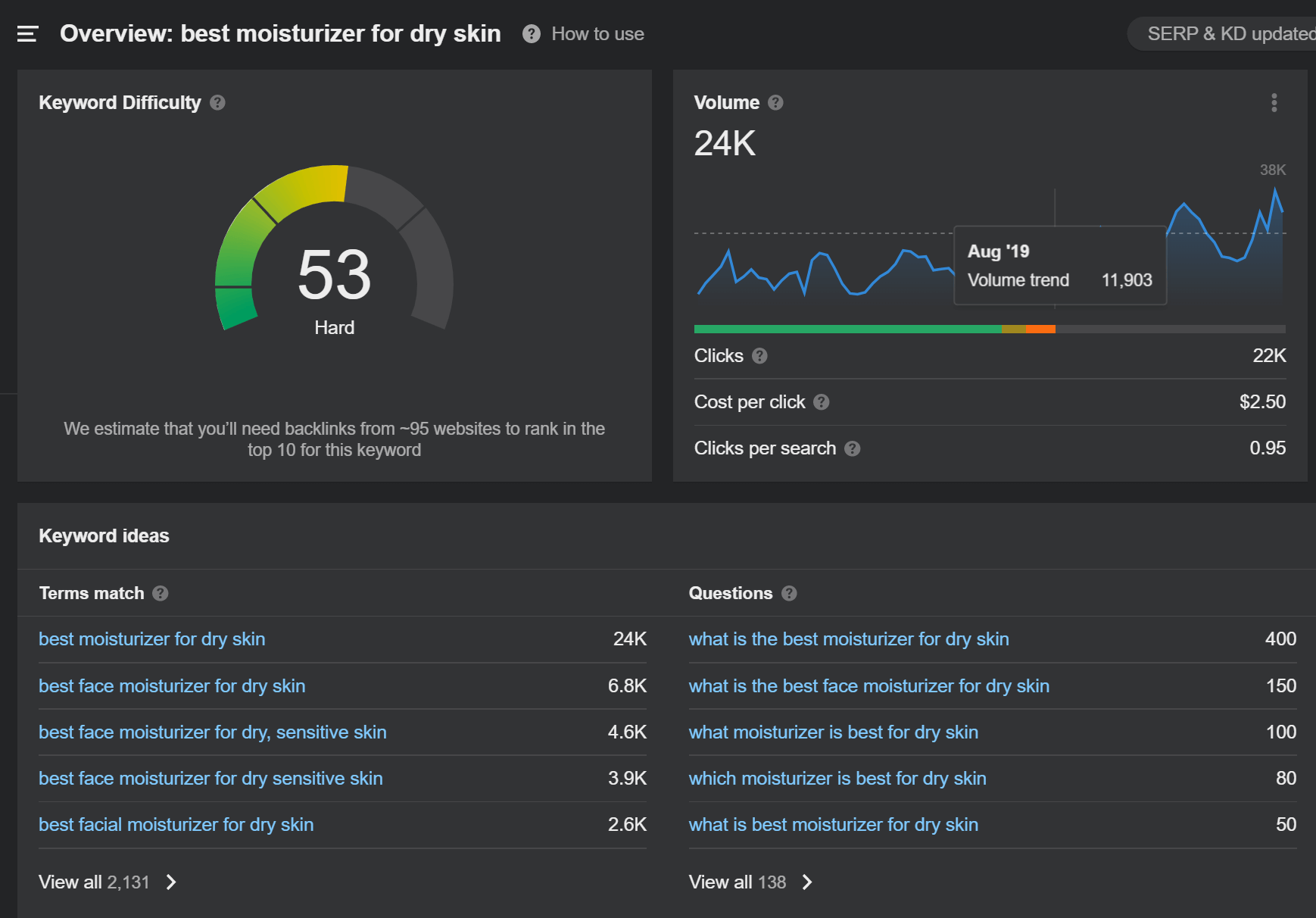
Apart from these, the tool can help you find out keyword ideas and questions. These are essential for creating more targeted and informative pieces of content for your audience.
3. Content Marketing Strategy
Online content creation is one of the most effective ways to increase brand awareness and organic traffic. So, after you have found the right keywords to target and selected the right type to do so, you can start creating your piece.
The key to succeeding in content marketing is to make your content valuable, offering viable solutions to common pain points. Also, remember that a user searching the web for answers isn’t necessarily ready to buy something.
So instead of bombarding them with sales copy, try to educate them about the options they have and let them know how your product can help them out.
As we saw above, content comes in many different forms. Here are the most common formats that businesses use to nurture and convert their new customers:
- Blog posts
- Case studies
- Videos
- Ebook and resources
- Webinars and podcasts
Example – Function of Beauty’s Blog
Running a blog isn’t only a B2B practice. For many eCommerce stores, having one will give you the opportunity to educate your potential and new customers on a variety of topics.
Furthermore, you can use your posts to provide them with tips and add more content types like videos to improve the user experience.
For instance, the eCommerce brand Function of Beauty has created an aesthetically pleasing blog to provide its audience with valuable information regarding hair care and more:
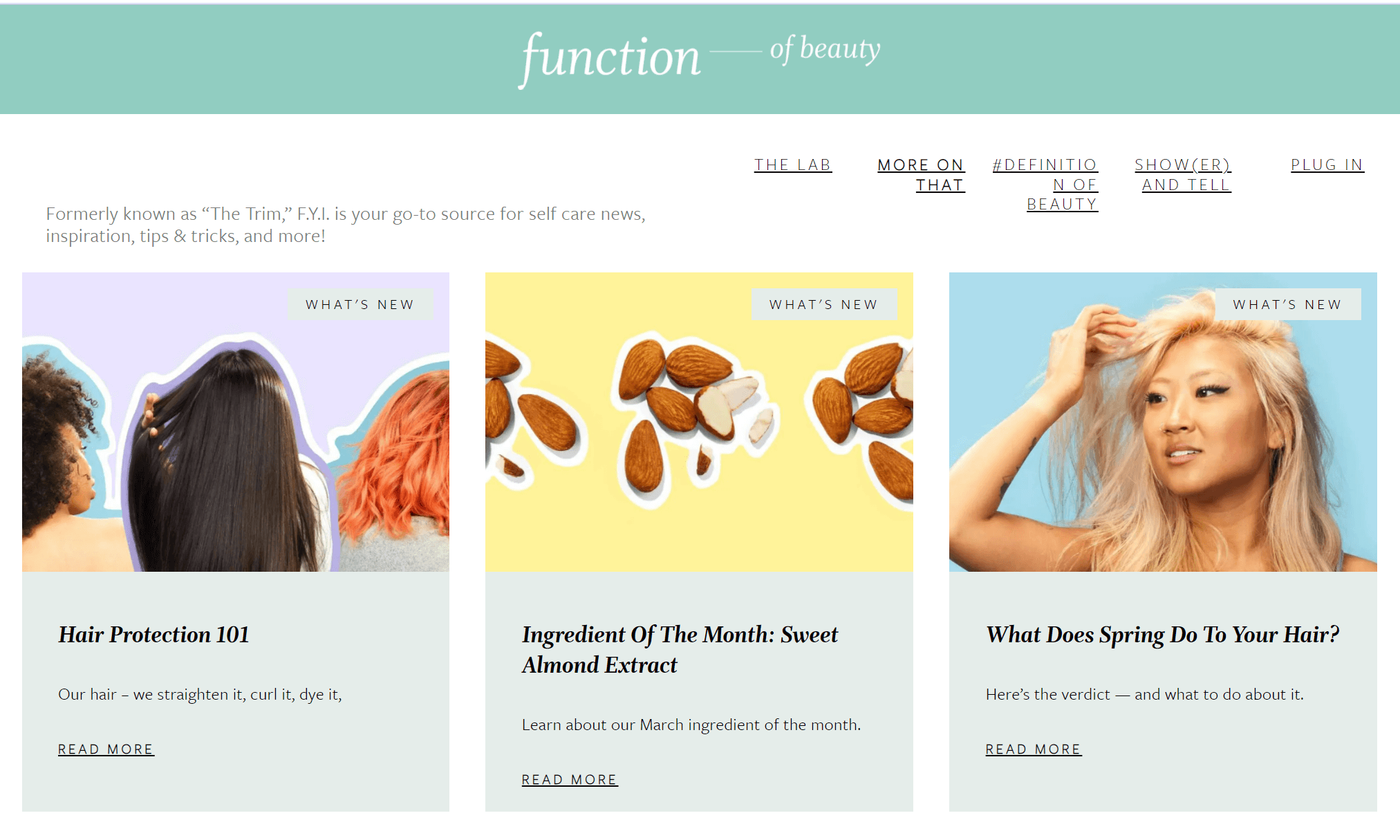
4. Social Media Marketing Strategy
This is probably one of the most widespread digital marketing strategies that a lot of marketing managers adopt. The reasons are simple. Social media is an easy-to-use channel that the majority of consumers use to gather inspiration, connect with their favorite brands, and even shop.
Moreover, you can leverage the two options that this channel offers, namely organic posting (posting high-quality content, interacting with followers) and paid advertising (PPC campaigns, etc.)
When it comes to the first one, you need to target the social media platforms that your audience likes to use. Facebook, Instagram, Twitter, and LinkedIn are among the most popular social media channels you can start with.
For instance, if you have a young audience, you can leverage Instagram to increase brand awareness through fun visual content. For B2B companies, you can take advantage of LinkedIn to build credibility and establish yourself as a thought leader.
The paid advertising strategy entails the creation of social media ads, such as Facebook Lead Ads, Google Ads, and so on. Usually, the most popular ones are the Pay-per-Click campaigns where you give an X amount of money for each click they receive.
Both of these methods will help you increase your brand awareness and boost your retargeting efforts. Also, you can always collaborate with influencers and create solid partnerships with them for better results.
Example – Sitecore’s LinkedIn Post
Targeting your audience with high-quality content that solves their pain points is the best way to ace your organic social media marketing strategy.
Sitecore, for example, is very active on LinkedIn, a platform its target audience uses to connect and get informed about various topics. By creating posts like the one below, the company aims to boost its brand awareness and lead generation by promoting its Virtual Developer Day:
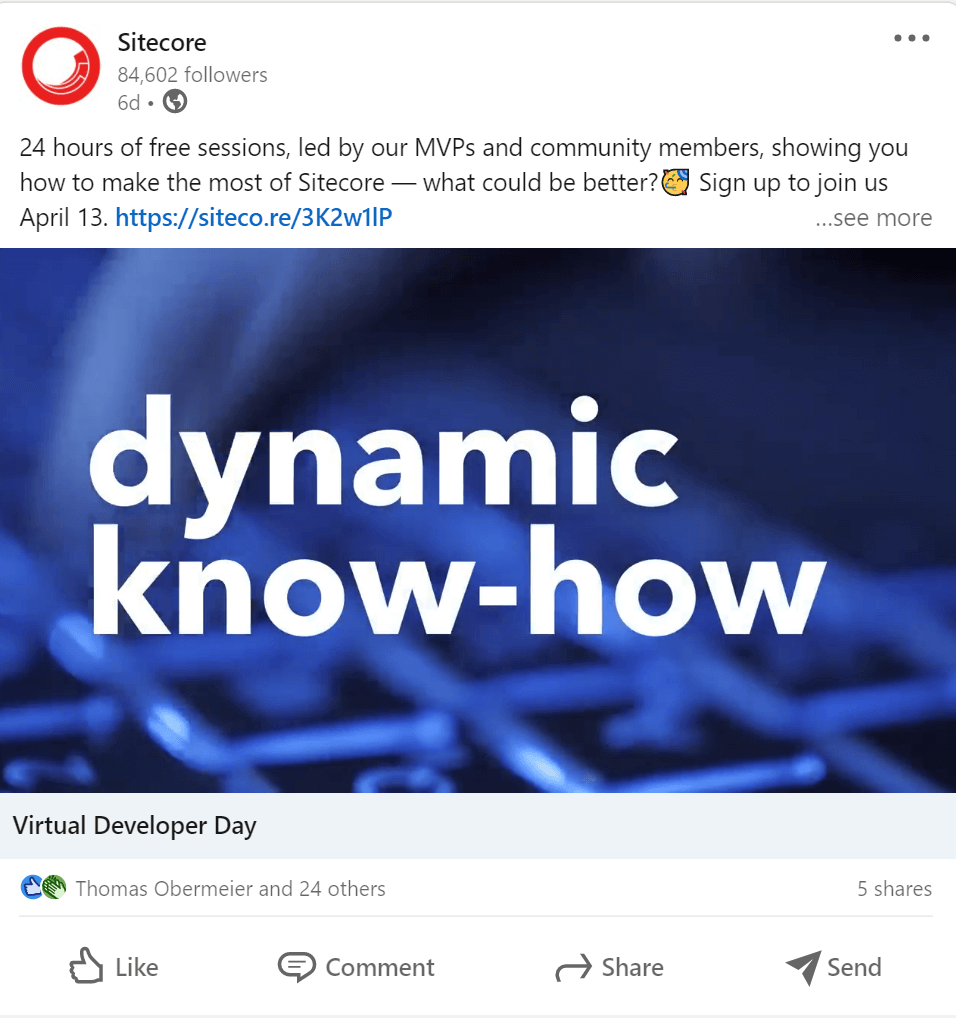
Need more online marketing strategies? Check out our guide to discover them. Now let’s see what else you can use to ace your marketing efforts.
Offline Marketing Strategies
Apart from the above digital marketing strategies, you can also leverage some popular offline tactics that marketers have been using for ages.
While online marketing is a stronger contender compared to them, you can use them in tandem with your digital endeavors for better visibility and results.
5. Guerilla Marketing
You may have heard about this strategy before but what is it exactly?
In short, guerilla marketing entails the planning and execution of various marketing activities. Nevertheless, compared with traditional campaigns, these actions cost less than they would typically do.
Guerilla campaigns work due to the differentiation from the common marketing campaigns. They are usually unconventional and they aim to become viral due to their unique spirit.
Moreover, to qualify as guerilla, your marketing campaign needs to be authentic, unexpected and highly targeted. If you follow the guerilla way, you can create something intriguing that will generate the buzz you desire.
Here are some options that marketers can use:
- Street campaigns: use street art and outdoor elements to promote your brand/product
- Ambient practice: place billboards and advertisements at unexpected locations
- Ambush marketing: take advantage of marketing campaigns from other companies to promote your brand
- Experiential campaigns: set up immersive experiences for your audience to excite and intrigue them
- Viral marketing: use word-of-mouth marketing to go viral and skyrocket your brand awareness
You can find examples from all of the guerilla marketing tactics mentioned above in this simple guide.
Example – Frontline’s Smart Campaign
A great example of a guerilla marketing campaign comes from Frontline.
Here, the brand installed a huge visual on the floor along with the caption “Get them off your dog.” To fully grasp the concept, people needed to see the ad from high above. Here’s what the campaign looked like:
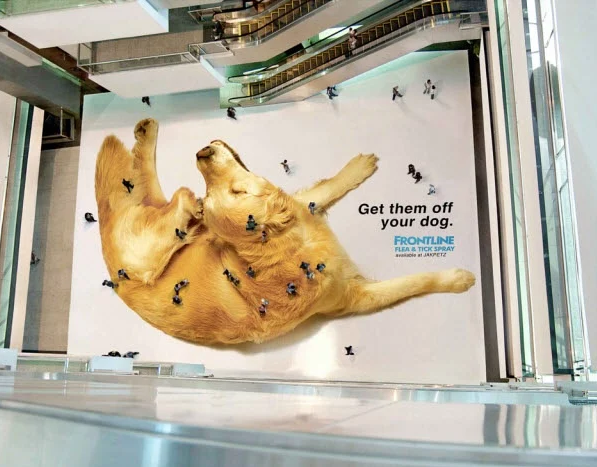
The innovation of the above guerilla campaign lies in the use of space and people to promote a message.
As you may have noticed, the passersby look like fleas, a common pet problem, and Frontline is there with the solution to get rid of them.
6. Event Marketing Strategy
Planning offline events is a great way to get your audience familiarized with your brand, product, and your employees.
As a tactic, both eCommerce stores and SaaS companies can use it to promote their visibility/credibility and build connections with their customers.
Based on your industry and goals, event marketing can take many different forms, including:
- New product demonstrations
- Conferences and seminars
- Pop-up shops
- Community days
- Special guest events
As events are an experiential form of marketing, you need to pay attention to the user experience you will create for your audience.
One mishap may hinder the smooth flow of your marketing efforts. So, make sure to have instant solutions to common problems to avoid ruining your visitors’ experience.
Example – Pantone’s Pop-up Cafe
Putting up a pop-up shop is a simple and effective way to intrigue customers who don’t know about you.
You can find a great location to set it up and then use your products to attract customers. If you are creative and lucky enough, your pop-up store may become viral like Pantone’s Pop-up Cafe.
The idea was to sell goods branded with the company’s color swatches. Here’s what the products looked like:
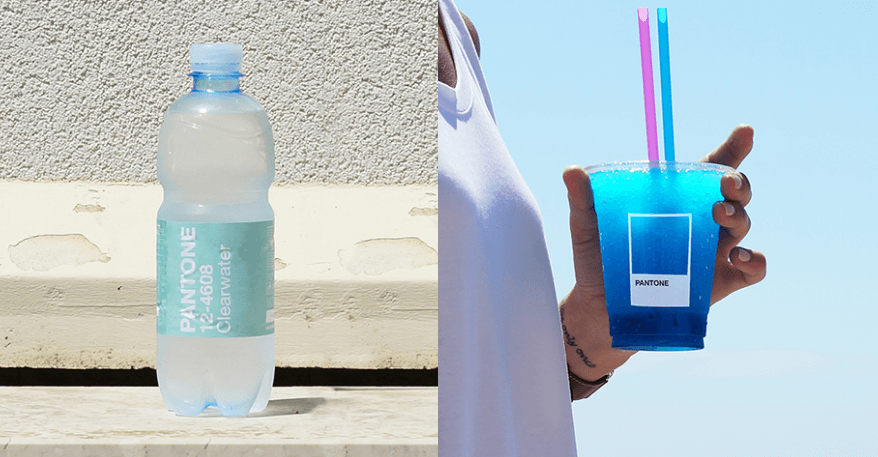
7. TV Advertising
Moving on, we have TV advertising, one of the oldest and most successful marketing strategies of all time.
Compared to digital marketing strategies such as email and social media, TV ads are created with a specific target audience in mind but are seen by everyone who happens to watch it.
This means two things. Firstly you have greater visibility as this channel reaches a bigger audience. Secondly, if your ad is smart and interesting enough, the impact may be greater than expected.
Nevertheless, using this channel is rather costly compared to the rest in this post. Not only that but you’ll also need to pay a big amount of money to film a high-quality advertisement to entice the viewer.
If you want to leverage this strategy, keep in mind that you won’t have the benefits of the targeted email or social media campaigns. Thus, you may not receive the conversions you desire despite reaching a bigger audience.
To run personalized campaigns with targeted content, you can try email marketing instead; it is cheaper and more effective, allowing you to nurture and convert your potential shoppers without breaking the bank.
You can try Moosend today, simply by signing up for an account.
Example – Nissan’s Super Bowl Commercial
The Super Bowl is the most popular sporting event of the year in the US. So it’s no wonder that some of the biggest brands seek to leverage it to promote their products during commercial breaks.
During the 2022 Super Bowl event, Nissan played a one-minute video with actor Eugene Levy. The short TV ad features action scenes and exciting music to intrigue the audience. While the quality is top-notch, the cost of this marketing campaign must have been quite high.
8. Billboard Advertising
Last but not least, we have the use of large-scale print media placed strategically in high-traffic locations to promote a product/service or a company.
This method of advertising can also be quite expensive depending on the type of billboard you choose to advertise on.
For instance, you can choose between traditional, digital, and mobile billboards. Of course, the price can change significantly, with the classic options ranging between $250-$750 and digital ones between $1,200-$1,500.
While billboards are a great way to increase your brand awareness by reaching a big crowd, there are certain drawbacks you need to consider before you proceed.
First of all, it is impossible to measure the performance of your campaign as you’d do with an email or a social media campaign.
If the message isn’t interesting enough, then the passerby won’t convert. The same will also occur if there’s poor visibility between the billboard and your audience.
Example – Spotify’s Bold Billboard
To promote its service, IKEA scrambled up these four pictures to present a customer pain point in a funny way.
The short text is perfect to get the message across as the words “happy to help” and “our assembly service” are stressed in bold. This is a great example of using creativity to promote your business in a simple way.
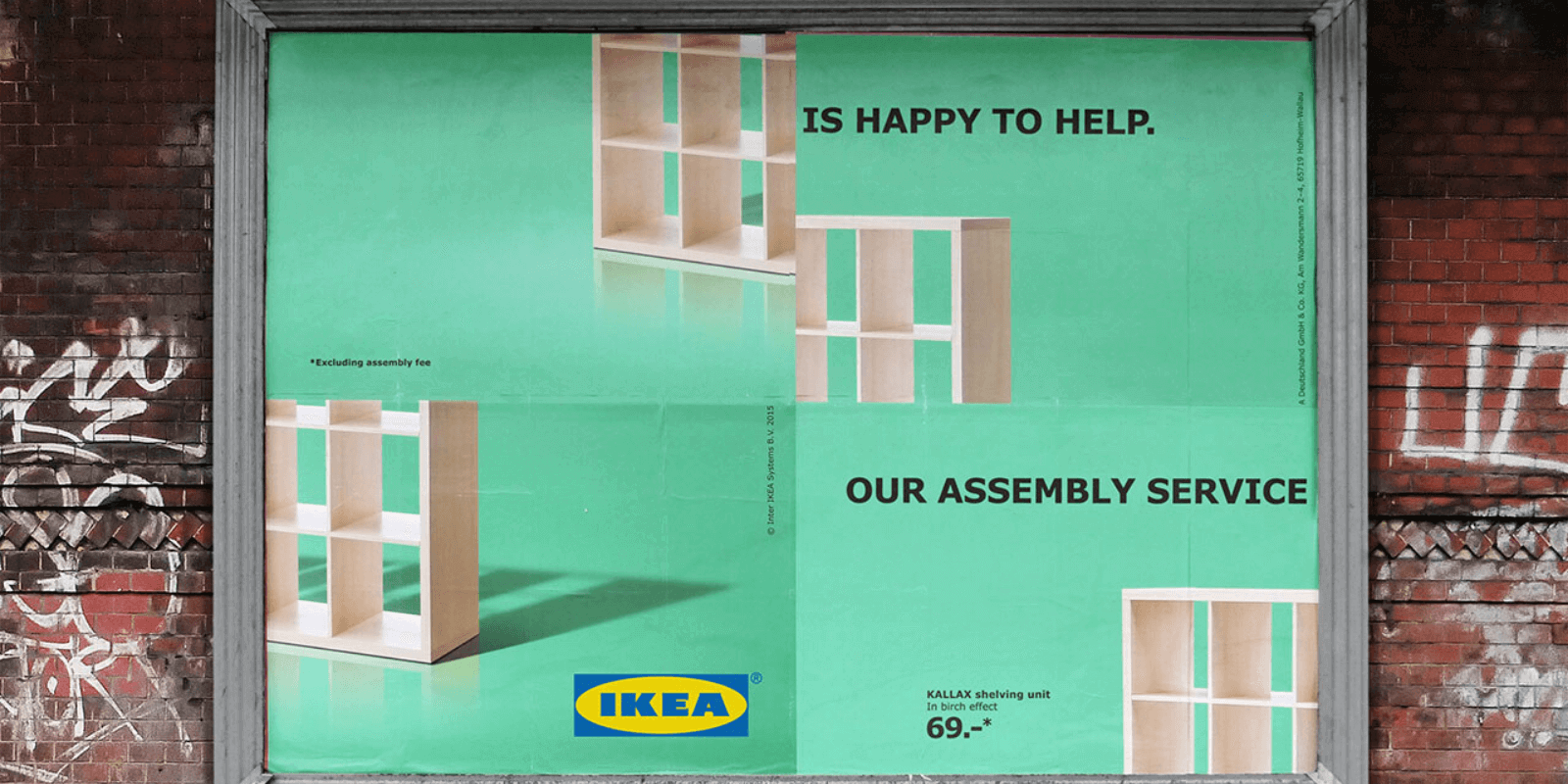
Hybrid Marketing Strategies
Up to now, we saw some great online and offline tactics to promote your business. Nevertheless, there are more ways to position your brand in front of your target audience.
In this section, we’ll see how you can combine some of the above actions to create a hybrid marketing strategy. Let’s start!
9. QR Codes, Social Media & Sales
Since their emergence, QR codes have found their way into marketing as a means to view product pages, webpages, send emails or even view a location.
This simple marketing tool is very easy to create (know how to make a QR code) and use, as the only thing consumers need is to scan it and receive the message you’ve created for them.
To take advantage of them for your marketing efforts, you can place them around your store and encourage your customers to scan and join you on social media. Then you can nurture your new followers with amazing content and convince them to return to your store.
Apart from that, you can also use QR codes in magazines and ads to lead your potential shoppers to dedicated landing pages where they’ll find a special incentive.
Example – Smarteyes’ QR Codes
Smarteyes has found a clever way to connect offline with online user experiences. The brand used a QR code in a magazine featuring one of their sunglasses.
Readers who come across it can scan the code on the left and get redirected to the product page where they can instantly purchase the product.

10. Online Coupons & Email Marketing
Email is the best way to reach your subscribers with targeted promotions and messages.
Brands usually deliver special codes to thank customers for being loyal to their business. Most of them are for online purchases but what if you could give your shoppers the chance to use your coupon in-store too?
According to statistics, 33% of consumers claim that they prefer shopping from a physical store as they like checking the products before purchasing. So why not give them the chance to do so by adding a barcode to your email?
Customers can print or show it via their mobile and enjoy the coupon, improving their in-store user experience.
Example – Loft Online & In-store Coupon
Loft has implemented the above marketing strategy, giving its subscribers the chance to get 15% off their purchase by adding a code and a barcode for in-store shopping.
This way subscribers can choose the way they want to use the coupon, leaving no room for dissatisfied customers.
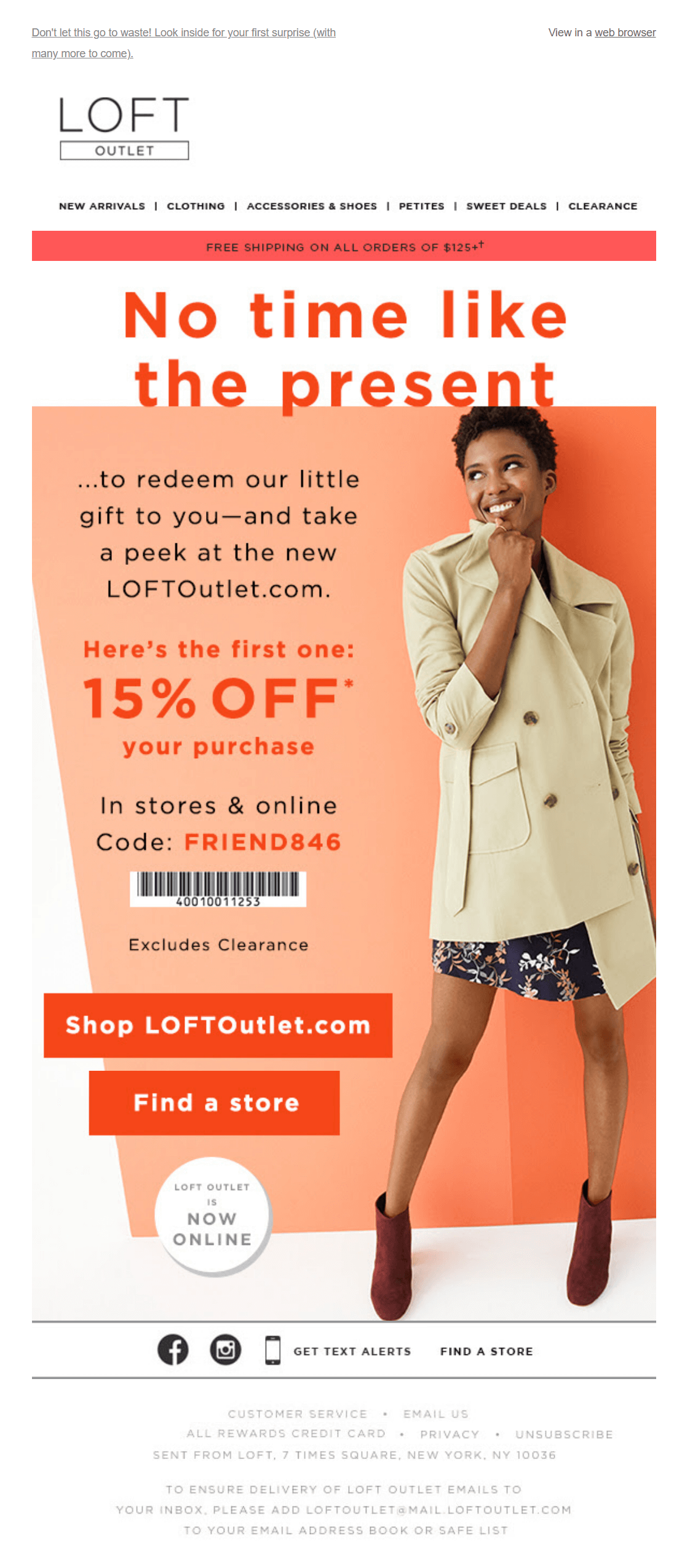
11. Email, Social Media & Event Marketing
As mentioned above, social media can be a great source of visibility for your brand. You can post engaging content, collaborate with influencers and even create paid ads to retarget your audience.
So what happens when you combine it with email and events marketing? You get a boost in your brand awareness, word of mouth, and sales.
To make this union work, you need to set up various points around your store where shoppers can take pictures and share them on social media.
For example, you can create a selfie spot and then prompt them to post it on Instagram with a hashtag. Encouraging them to interact with the event space and share their experience will offer you the chance to collect user-generated content.
UGC is perfect for boosting your authenticity as a brand, establishing bonds with your community, and letting your followers speak on your behalf. Lastly, you can include a photo booth and let your attendees take pictures and share them through email and text.
Example – Morphe x James Charles Launch
A great example comes from Morphe, a beauty brand that organized an in-store event to promote its collab with influencer James Charles.
The event included a digital photo booth with branded email and text sharing. This way, whoever received the picture could find out about the new product.
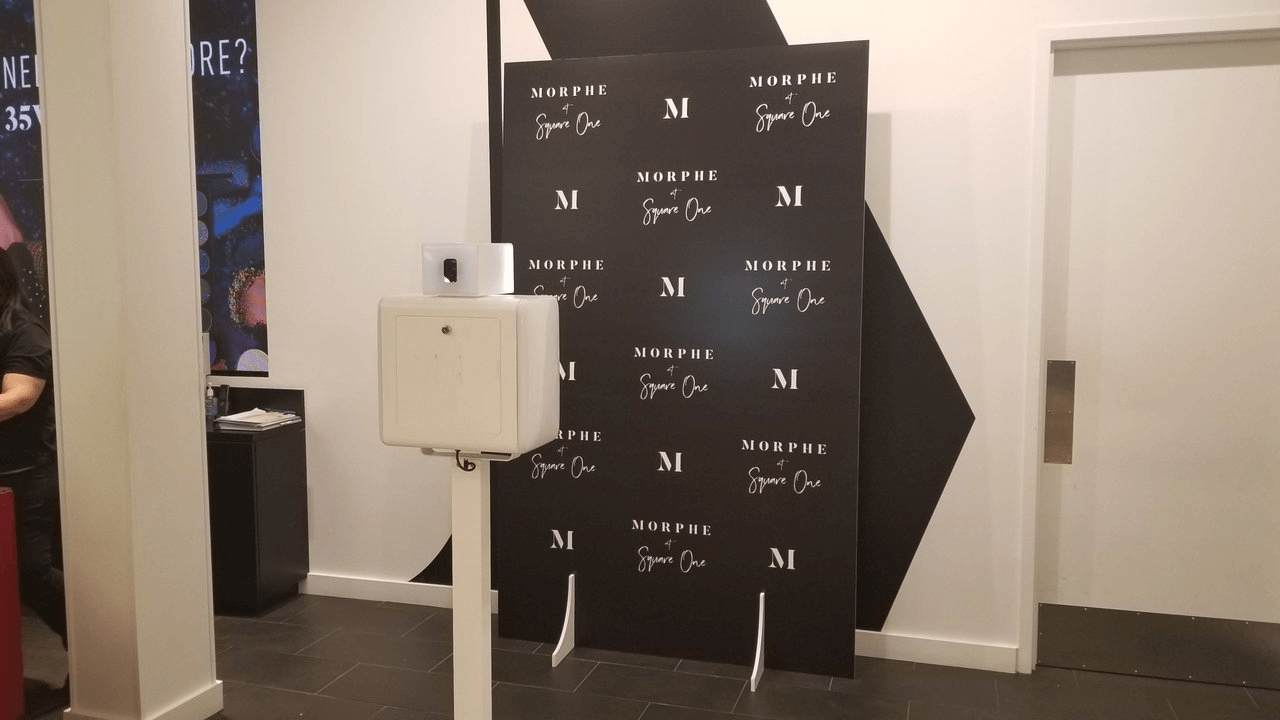
Creating A Successful Marketing Strategy
In this post, we covered some of the most popular tactics you can use to promote your business. Of course, to do so, make sure to find your target market and create your buyer personas first. Then, you can start exploring your options.
Online marketing strategies like email, social media, and paid ads are perfect for reaching a big audience, they are cost-effective and will help you grow fast.
Using offline tactics like guerilla marketing and events will also contribute to boosting your brand awareness through unique messages.
Nevertheless, if you want to take your marketing a step further, make sure to combine the best of both worlds. This way you will expand your reach and offer your customers better user experiences.
Are you ready to set your marketing efforts in motion? Make sure to get a reliable email marketing tool to help you along the way by signing up for a Moosend account. Now you are ready to go!
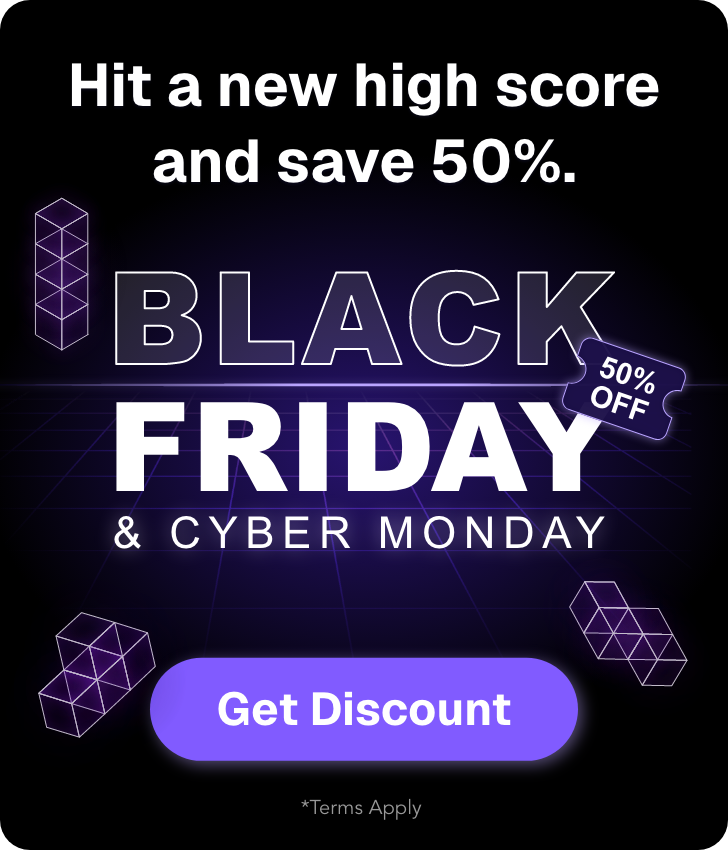


 Published by
Published by
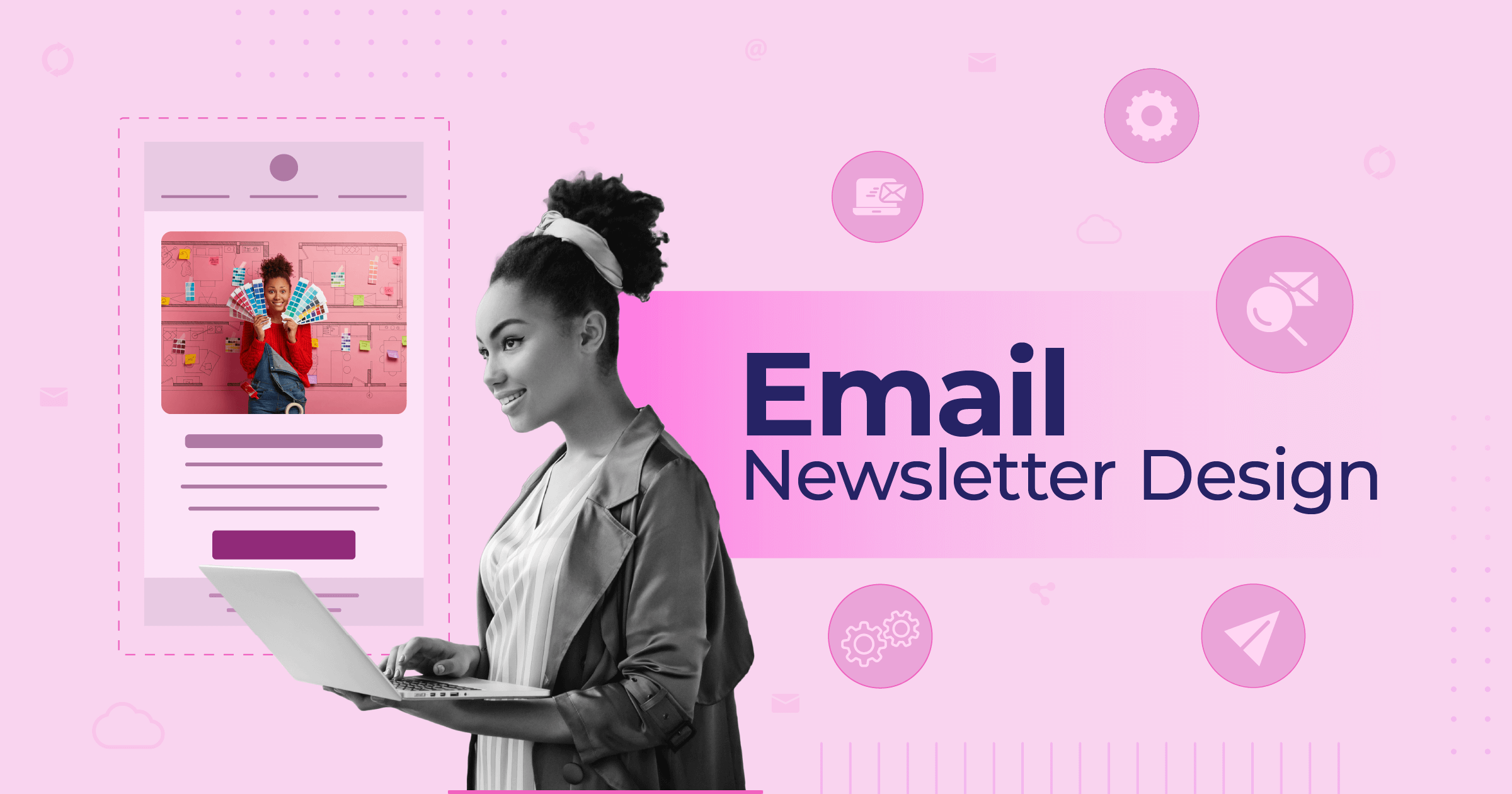
 Published by
Published by
